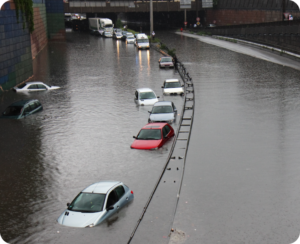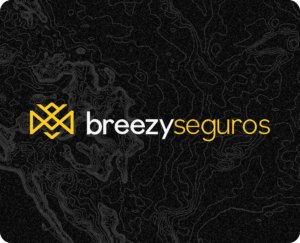Is your home or business in an AE or an A1-A30 flood zone? An AE flood zone is a newer version of what used to be ‘A1-A30 flood zone’. For clarification purposes, we will use AE terminology in this article, but the information and recommendations provided will also serve for areas A1-A30.
‘AE flood zone’ is a term used within a classification of flood risk levels made by the Federal Emergency Management Agency, or FEMA.
AE Flood Zone
Like Flood Zone A, AE flood zones have a 1% annual flood risk and a 26% flood risk at least once over the course of a 30-year mortgage.
Houses in an AE flood zone may be near plains, rivers and lakes or in a low-altitude region.
What is the base flood elevation for an AE flood zone?
The base flood elevation (BFE) is the height at which flood waters are expected to increase during a 100-year flood.
No two AE flood zones are completely identical, so each region has its own BFE and flood source. For example, residents of AE zones near the Great Lakes are at risk when water levels rise and are combined with winds that push waves to shore. On the other hand, residents of AE flood zones along the East Coast are at greater risk of flash floods and hurricanes.
Are homes in AE flood zones required to have flood insurance?
Without a doubt! This is an area where flood insurance is required for mortgages because of a high risk of flooding. Lenders with federal or regulated funds can only offer mortgages to homeowners who have a policy.
Your rate value will reflect the risk represented in your specific AE Flood Zone. For example, it may be rated one way if the property is near a river and another way if it is near a park.
However, in addition to the requirement, knowing the possible losses and the size of the risk in the region where you live or operate your business is just as important.
While insurance won’t stop a flood from damaging your property, having the peace of mind that the damage can be repaired without draining your savings is priceless.
Review your insurance
If you’ve had flood insurance for a while and haven’t reviewed it recently, now might be a good time to make sure you are not underinsured. Review your policy and make sure your coverage accounts for any major upgrades, renovations, or purchases you’ve made to your property.
Keep in mind that your home insurance does not cover flood damage. For complete peace of mind, you will need a separate policy that specifically covers damages.
How do I know the risk of the area I live in?
In addition to official sources from FEMA and NFIP, we know that some zones are not yet mapped or registered as being at-risk.
That is why we’ve written 6 Flood Questions to Ask Before Moving, which will help you determine your risks and the type of Flood insurance you’ll need. We even break down the kinds of improvements that can help protect your home in the event of an unexpected flood.
If your home is in an AE flood zone
Taking steps to mitigate flood damage is a good way to keep your flood insurance premium more affordable. Here are some ways to reduce your flood risk:
- The lowest level in the house must be at or above the BFE.
- Enclosed areas below the BFE, such as a basement, cannot be used as a living area.
- All electrical, hydraulic and HVAC equipment must be maintained above the BFE.
- If your garden tends to accumulate water when it rains, try modifying it so that the slope faces away from your house.
- Install a backflow valve.
- Position gutters to keep water away from your home.
- Speak with your county’s water service representatives to make sure your area’s flood protection systems are up to date.
Newly built homes will likely meet these requirements, but older homes may need updating. If everything is up to date, you can obtain an elevation certificate and get discounts on insurance.
The high probability of flood damage in AE flood zones means ongoing vigilance in property maintenance and safety equipment. Another way to protect yourself is to elevate your home.
Combine these tips with quality coverage to ensure your home survives the next flood in your area.
Have an emergency plan
If you’ve followed all the tips above and signed up for flood insurance, that is great! But as they say, you can never be too careful. Having an action plan in place can be a total game changer.
Even with all of the precautions taken, it may be necessary to place sandbags at the doors to direct the water flow and move your belongings upstairs or on top of tables and bulk furniture.
If you live in an AE flood zone, you may also need to evacuate the area, so be prepared. Assemble an emergency kit with all of the essentials so that you can leave immediately if necessary.
You already know this, but we will always remind you: at Breezy Seguros, we are here to help guide you to make the best choice for you! When in doubt, reach out!








